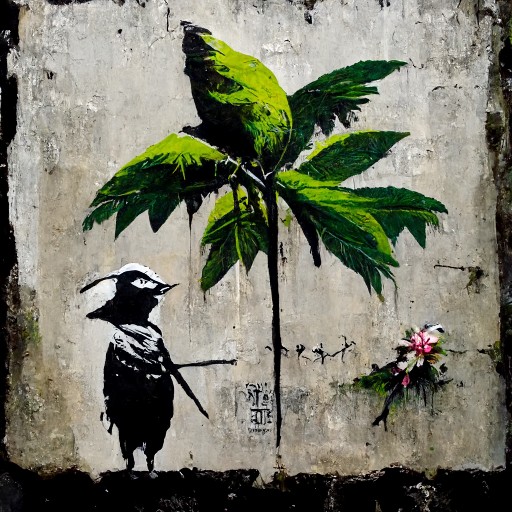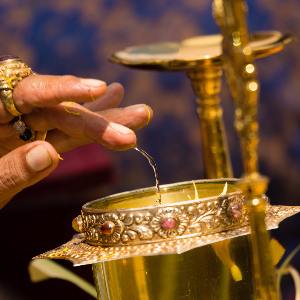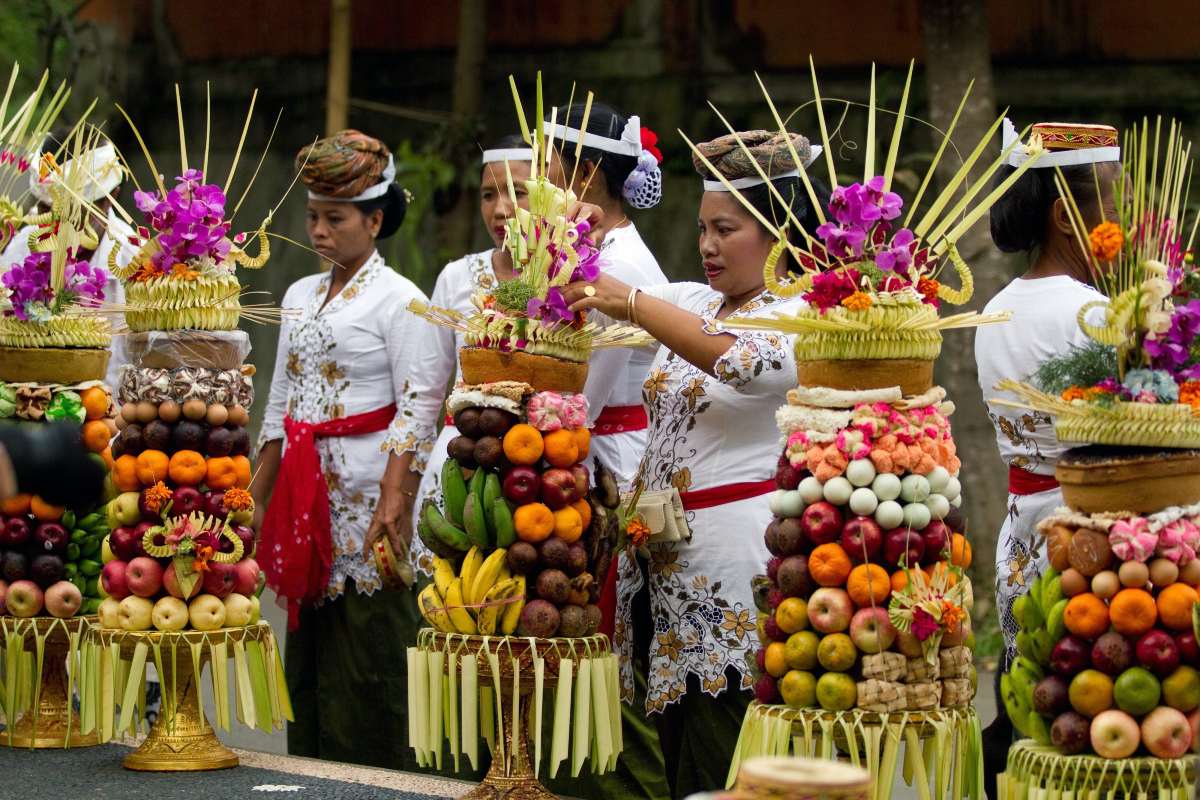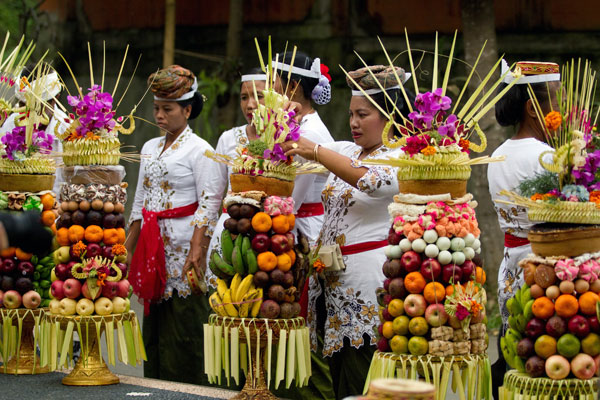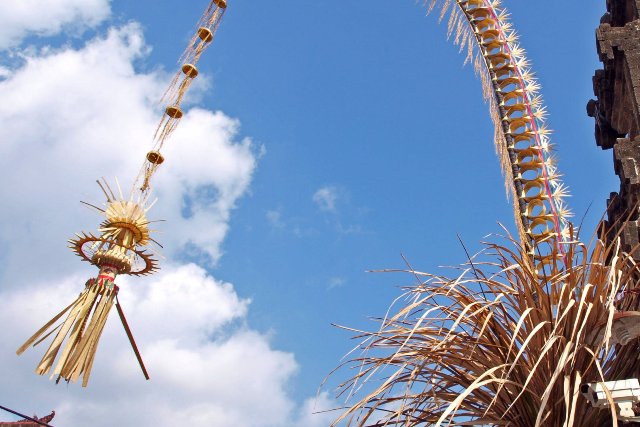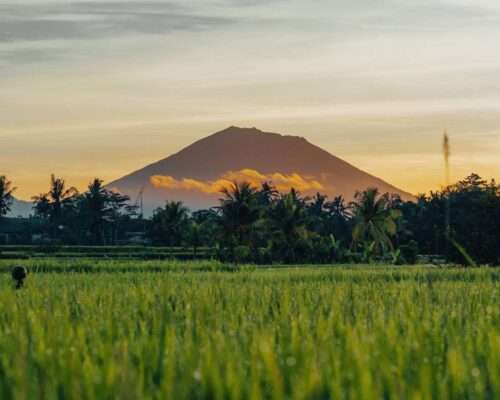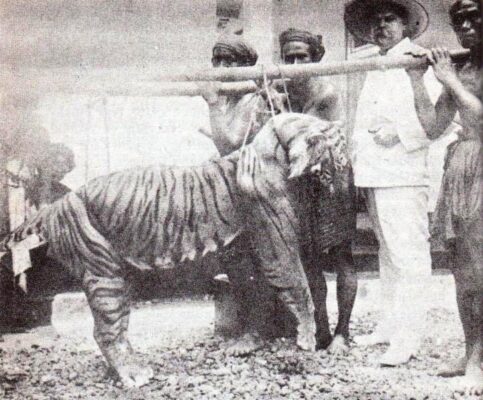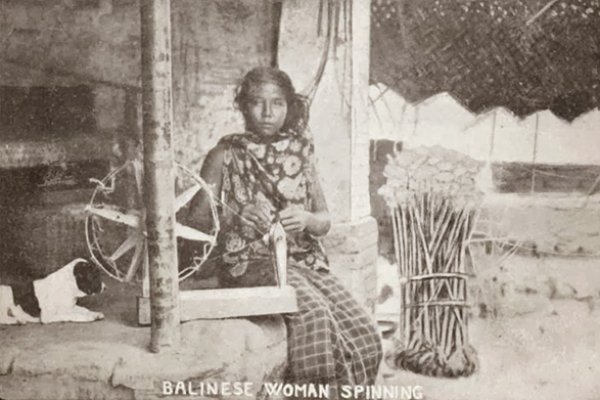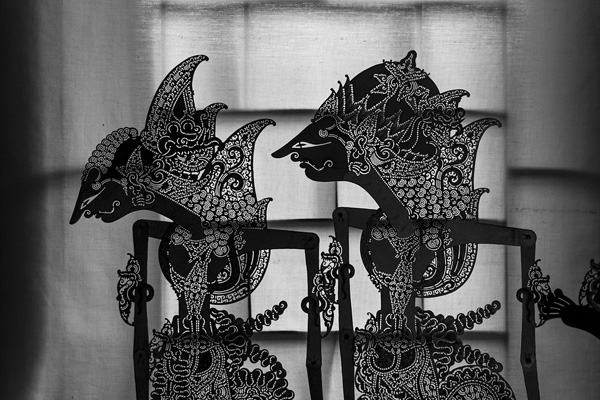BANTEN – Balinese Offerings – you can’t miss them
Wherever you go, you will see little baskets on the floor with incense sticks and little goodies such as sweets, fruits and sometimes even some money and a cigarette. In front of shops and homes, in the middle of cross roads and junctions, and on temple shrines outside and even inside offices, restaurants and basically wherever you go.
Why do the Balinese provide offerings?
For one simple reason: It brings delight to the Gods.
“Whosoever offers to me with devotion a leaf, a flower, a fruit, or water, that offering of love, of the pure heart I accept (ix:26)”
This is one of the lines Khrisna told Arjuna, describing what God expects from an offering, and is quoted from the Bhagavad-Gita. This message is still well executed by all the Balinese throughout the island. Although, there are many varieties of simple offerings to extravagant ones that can be found today in Bali. Each of them must consist of all the components that have been foretold: Items used in the offering are natural materials that are used and found in everyday life, such as sewn palm leaves, colorful flowers, and sometimes little pieces of food or sweets.
